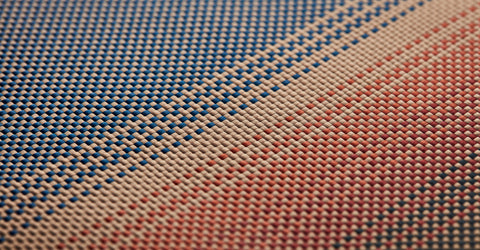
You wake up from a great nights sleep, you glance over at your Apple Watch sitting serenely on its wireless charging pad and check the time; in the kitchen you scoop some grains into the rice cooker and switch it on, and it’s not even plugged into the wall; getting ready for work you grab your wirelessly charged toothbrush; driving to work, you place your smartphone on the magnetic, wireless charging dock in the car; when you get to work, you park up and the car starts to charge from the wireless charging pad underneath; when you get in, you sit down in front of your wirelessly charged laptop ready for the day ahead;
This sounds like that start of a science fiction film, right?
The thing is, all these devices exist today and you probably have some of them right now. The idea has always been simple; charge your device without the need for any wires or power cords. The reality, however, is somewhat different; it can still be quite messy and confusing.
Why is that?
Well, let’s take a look at what is out there today.
1. What wireless charging technologies can you access right now?
Wireless charging has been around for years, it’s been a slow adoption by the consumer, but things really took off when Apple joined the WPC (Wireless Power Consortium), and they released the iPhone 8/8 Plus and X with Qi wireless charging functionality.
1) The High-end tech series that Apple developed
If you take a look at Patently Apple, you will find a host of Apple design patents and its clear that they are working to capitalize on wireless charging technology, which most of the time, goes unnoticed. It’s clear to see why Apple products are at the premium end of the spectrum, whilst there is plenty of amazing technology for us to see and use, there is an equally amazing array of technology beneath the surface.

Take the upcoming Apple AirPower platform for example, Apple’s approach to unifying the wireless charging demands of the iPhone, Watch and AirPods through a single charging pad.
2) Other wireless charging devices that you may have around the home
Apart from the smartphones, watches, etc., you probably already have a number of other devices in the home that are wirelessly charged.
No.1: The electric toothbrush. These appeared decades ago and every home has one, if not one for every member of the house. Simple to use, extremely convenient and they are waterproof too, no chance of them not working when they get wet!

No.2: The wirelessly charged laptop. Dell started selling the world’s first wireless charging laptop, the Dell Latitude 7285 in July 2017, although the wireless charging features need to be added on at additional cost.

No.3: The magnetic wireless charging car phone mount. Gone are the days of hunting for the right type of charging lead and then finding somewhere to put your phone in the car. The magnetic wireless charging dock does away with all that, simple to use and it enables you to use your phone safely, hands-free.

Plus there are lots of other devices, cordless phones, wireless power banks, wireless charging keyboards and mice, all available right now.
However, as much as there are many devices that charge wirelessly, there is still lots of confusion, questions still get asked like, 'wireless charging still doesn't make sense', 'is wireless charging worth it', 'wireless charging vs wired charging' and so on. The biggest question being ‘why isn’t wireless charging used everywhere now?’.
2. Why hasn’t wireless charging been widely adopted?
There are a few key reasons why:
A) Competing wireless standards have slowed down adoption.
In the early stages, there were three standards: PMA (Power Matters Alliance), A4WP ( Alliance for Wireless Power) and Qi (developed by Wireless Power Consortium), which was the dominant standard. The first two merged to form the Airfuel Alliance in 2015 (of which Powermat was a member) to compete against the WPC. This was fine until Apple signed on to use the Qi wireless charging standard for its iPhones. Consequently, the battle is pretty much over; in January 2018, Powermat announced that it was joining the Wireless Power Consortium (WPC).

This is a significant step in the growth of both the wireless standards but also the ability for companies and technology to adopt this standard, safe in the knowledge that the consumer will be familiar with it and the technology will work harmoniously.
The end result for us is more tech with wireless charging functionality!
B) Wireless charging generates more heat during charging
OK, if you have used wireless charging, you will know that it does indeed get warm to touch when charging, although if you read my previous article, Does Wireless Charging Affect the Life of your Smart Phone Battery? The Answer is No!, I look at why wireless charging doesn’t damage your phone’s battery under normal conditions. Incidentally, even if you charge your phone via a wired connection, the battery still gets warm to touch, just not as much.
C) Wireless charging tends to be slower and less efficient
Currently, the slower charging speed is an adverse effect of the heat generated during charging. A proportion of the current used to charge ends up as heat, and this decreases the current available to charge the phone.
It’s a common view that the heat and the speed are the two main reasons why people avoid wireless charging; it might be your view too?
D) Wireless charging costs more money!
Right now, wireless charging pads and docks cost more to buy than a simple wired charging lead. They are becoming cheaper, but at the moment, they are still more expensive.
In my view, the convenience and reliability outweigh the cost-difference. I would rather pay that little bit more for the simplicity of just placing your smartphone on the dock/pad and seeing it charge, rather than finding the right lead (Mini USB, Lighting, USB C, etc) only to find that it’s broken, you know, that point where the lead goes into the connector, it’s a very common place for your cable to break.
So, at present, wireless charging technology is still not widely used, but it is gaining an increasingly larger market share. According to a study by Global Market Insights, Inc., the wireless charging market is set to exceed $25bn by 2023, though I believe that the actual data will be much higher.
Why? Well, there are a number of new emerging technologies on the way.
3. What new wireless charging technologies can you expect?
I mentioned a few of them at the start of this article, but let’s look at a few in a bit more detail.
1) Apple Airpower
Those who are tech savvy or keep an eye on the Apple-related news may already know that the AirPower will enable devices to communicate with each other to manage power consumption, which is a significant feature compared with other common wireless charging pads available at present. When are we likely to see it? Well, during the Apple event in September 2017, Apple said that AirPower would appear some time in 2018, so we just have to wait!
2) RF-based long range wireless charging
Imagine that instead of being chained to the nearest charging point or having to leave your phone on the charging pad, you could walk around freely, sit wherever you want whilst using and charging your phone wirelessly.
A new patent application by Apple hints at RF-based long-range wireless charging, along with the lines of the Energous system, which has been granted FCC approval. This means that you could charge your phone from a distance in the near future, hooray!

3) Wireless electric vehicle charging
You might be one of the lucky people who drives an electric car but frustrated by the hassle of plugging in. Well, BMW is going to make things a lot simpler by offering owners a pad to wirelessly charge your car. While it’s still a little way off and there’s no word on what it might cost when it does arrive, it’s something that will really improve the experience of owning and driving an electric car.

Also, according to The Economist, more than half a dozen large carmakers, including Audi, Ford and Volvo, are expected to begin selling electric vehicles (EVs) soon that can be charged wirelessly.

Exciting isn’t it. There is so much to look forward too.
Even though wireless charging isn’t being used everywhere right now, it’s already becoming an irresistible trend used to persuade the consumer to buy a particular piece of tech.
Although today, most are either expensive or not widely available. There are still plenty of gadgets that use wireless charging technology and we often wonder how we got on before, take the magnetic wireless charging car phone dock for example, something so obvious, so necessary, yet before it was available, we would be frantically trying to find somewhere to put the phone and then trying to find the lead, charger, etc.
The PITAKA MagEZ Mount Qi is one such gadget. It looks like very clean, simple, yet hidden within is the magnetic docking capabilities and wireless charging features that means that you don’t have to worry where to put your phone or where you left the charging lead.

Combined with the PITAKA MagEZ Case, your smartphone is securely held on the dock and it automatically charges wirelessly, it’s super easy to use.

It also supports fast charging too, so you can be sure of a full phone when you arrive at your destination.

And that’s not all. It has 3 types of mounting bases so that you can select the best one for your car.

Check my article Here are 5 Reasons why you really need a Magnetic Car Mount for your Phone to get more ideas.
The Bottom Line
Wireless charging technology is very cool, but it’s not quite mainstream yet; there are still a few things that need to be improved upon such as reducing that amount of heat generated, reducing charging times and making things cheaper. But it’s safe to say that these will all be addressed as it becomes widely available.
If you are one of those who wants to use wireless charging technology, a car phone mount is an essential bit of kit to have, ensuring that your smartphone is safely mounted in your car and charging whilst driving.
The PITAKA MagEZ Mount Qi has been designed with a very specific set of objectives, to safely and securely hold your smartphone, to efficiently and quickly charge your phone and to look good. If you protect your smartphone with a PITAKA MagEZ Case, you have the perfect partnership, simple, safe and secure.
It’s definitely worth taking a closer look at the PITAKA range.



















